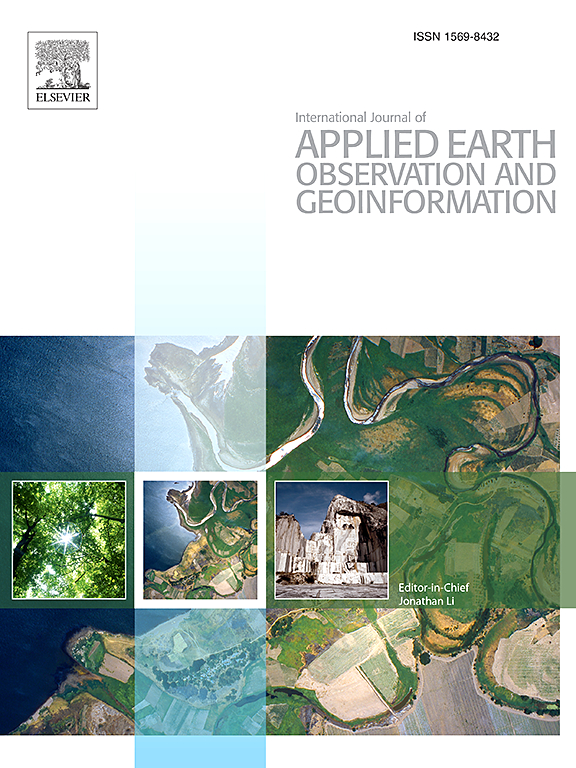A novel approach to retrieving the surface soil freeze/thaw state in the Qinghai-Tibetan Plateau using the seasonality of CYGNSS time series
IF 7.6
Q1 REMOTE SENSING
International journal of applied earth observation and geoinformation : ITC journal
Pub Date : 2025-02-17
DOI:10.1016/j.jag.2025.104428
引用次数: 0
Abstract
Soil freeze–thaw (F/T) processes are a typical physical phenomenon on the Qinghai-Tibetan Plateau (QTP), significantly impacting regional climate change and the hydrological cycle. This study presents a Seasonal-Trend Decomposition using Loess and Long Short-Term Memory (STL-LSTM) method to detect spatiotemporal variations in soil F/T on the QTP using time series data from the Cyclone Global Navigation Satellite System (CYGNSS). The model was validated against ERA5 soil temperature data (0–7 cm) and independent in-situ observations, demonstrating good consistency. The SHapley Additive exPlanations (SHAP) model was integrated into the STL-LSTM framework to quantitatively evaluate the contributions of input features to F/T retrieval, revealing that time features contributes the most to retrieval results, followed by surface reflectivity. Moreover, spatiotemporal analysis of QTP F/T dynamics shows prominent seasonal patterns, with topography-induced shielding delaying thawing in central QTP regions and freezing trends extending from low (28°N) to high latitudes (36°N). The proposed method offers a new pathway for monitoring freeze–thaw transitions in high-latitude regions and holds potential for expansion into future high-frequency and multi-polarization GNSS-R missions.
求助全文
约1分钟内获得全文
求助全文
来源期刊

International journal of applied earth observation and geoinformation : ITC journal
Global and Planetary Change, Management, Monitoring, Policy and Law, Earth-Surface Processes, Computers in Earth Sciences
CiteScore
12.00
自引率
0.00%
发文量
0
审稿时长
77 days
期刊介绍:
The International Journal of Applied Earth Observation and Geoinformation publishes original papers that utilize earth observation data for natural resource and environmental inventory and management. These data primarily originate from remote sensing platforms, including satellites and aircraft, supplemented by surface and subsurface measurements. Addressing natural resources such as forests, agricultural land, soils, and water, as well as environmental concerns like biodiversity, land degradation, and hazards, the journal explores conceptual and data-driven approaches. It covers geoinformation themes like capturing, databasing, visualization, interpretation, data quality, and spatial uncertainty.
 求助内容:
求助内容: 应助结果提醒方式:
应助结果提醒方式:


